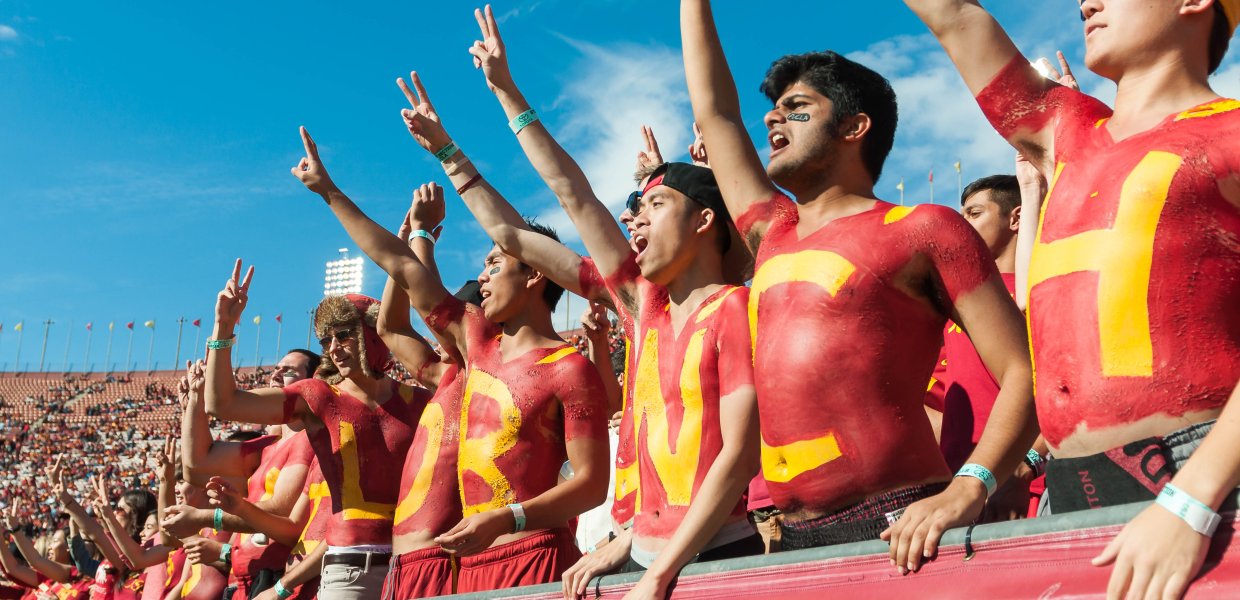The Center for the Digital Future at USC Annenberg and ThePostGame today released initial findings from the comprehensive behavioral study of American sports fans, including the impact of the post-Millennial Generation Z. The first results from this inaugural annual study were presented at the 4As Transformation advertising conference.
“Sports continues to gain importance among all content — in some cases, it is the only must-see live content left,” said Jeffrey I. Cole, Ph.D., founder and director of the Center for the Digital Future at USC Annenberg. “Tracking all aspects of sports fan sentiment and behavior will provide unprecedented insights into where fans are today, where they are going, and why that changes everything.”
“The goal of the #SCORE research is to help all aspects of the sports industry address the transformative effects brought by technological change,” said David Katz, founder and CEO of ThePostGame, a leading digital sports content company and co-sponsor of the study. “This study’s unique data will help leagues, teams, networks, tech companies, advertisers and fans navigate this rapidly evolving landscape.”
“#SCORE 2016: The Impact of Changing Sports Fan Behavior on Media, Advertising and Spending” will bring a unique perspective to the industry, combining the academic rigor and exclusive data from the Center for the Digital Future’s 17-year World Internet Project with ThePostGame’s category expertise in digital sports content in this new survey. This comprehensive analysis covers 60 sports.
The following are among the initial findings from #SCORE 2016 released today:
Looking at Fans
- 86 percent of Americans consider themselves sports fans (92 percent of men and 80 percent of women).
- 24 percent say they are “intense” sports fans.
- 88 percent of sports fans follow more than one sport, and 89 percent follow more than one team.
- Even among those who are not sports fans, one-third say they follow more than one team.
- The demographic profile of the most intense sports fans: Male, African-American, 35-54, married, making $75-100,000 per year, and having a college degree.
Looking at Media Consumption
- In general, very few people feel they can get all the sports content they want from free sources. More than 90 percent of sports fans would be willing to pay something for sports programming.
- 59 percent of sports fans want sports as part of their basic pay-TV package or bundle. Another 28 percent want it as an option.
- Sports fans say they will pay more for streaming than for similar channels via cable or satellite television.
- Those age 25-34 say they will pay the most for sports programming.
- And in one of the more surprising findings, women are more willing to pay for sports programming than men. In all cases except baseball, women say they will pay up to 50 percent more.
- 29 percent of 25-34 year olds said they would watch a sporting event streamed live from someone’s mobile phone.
Looking at Advertising
- 64 percent say television commercials aired during commercial breaks are the best way for brands to advertise in and around sports content, more than in-game graphics (20 percent) or on-air mentions (14 percent).
- More than any other age group, under 18 year olds are the most likely to find that television advertising enhances the sports viewing experience (21 percent). Although larger percentages across all ages believe that advertising around sports programming detracts.
Additional findings from #SCORE 2016 — including mobile device use, behavioral differences by Millennial/GenZ demo, willingness to pay for specific content and distribution options, leagues/sports interests by age, and sentiment about high-profile issues and trends in sports — will be released over the next several weeks. The study will be performed annually, and partners will participate in quarterly “deep dive” surveys on various topics.
Private briefings of the study’s comprehensive findings are available for leagues, teams, brands, media companies, technology companies, agencies, facilities owners, and local and state governments. To schedule a briefing, please contact Phoebe Schramm at pschramm@digitalcenter.org.
Methodology note: This survey was sampled nationally between January 6th to February 2nd, 2016. Respondents were age 15-74, living in the U.S., and the survey was conducted in English. The results are based on the responses of 1005 individuals and the survey’s margin of error is 3.1 percent.








